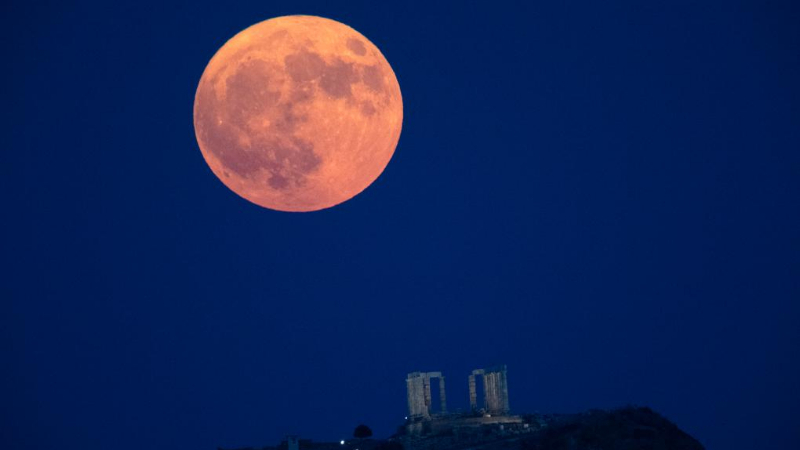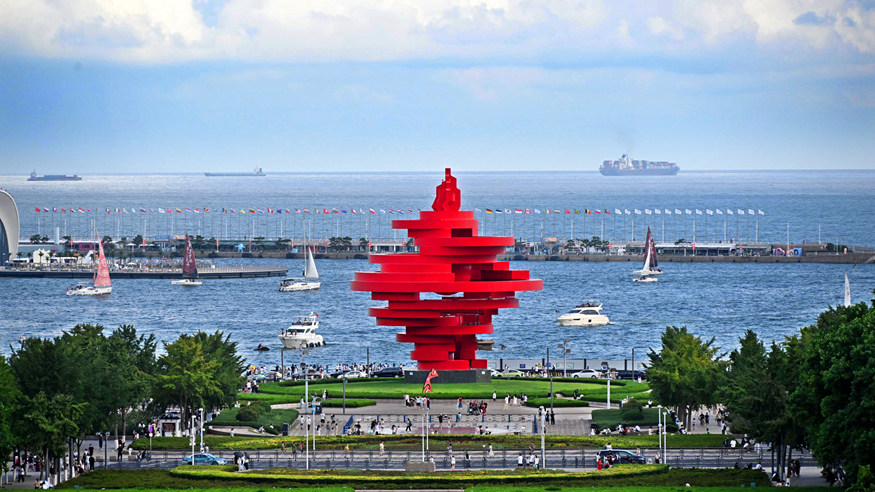* Following a booming ice-and-snow season last winter, northeast China's attractions, previously renowned for their spectacular winter scenes, are now experiencing a surge in summer tourism.
* By establishing a dual tourist image -- ice and snow in winter and cool getaways in summer -- the local authorities have carved out a development path.
* Beyond the region's top tourist cities like Dalian and Harbin, smaller cities such as Yichun, Dandong, Benxi, Jinzhou, Qiqihar and Huludao are gaining popularity.
SHENYANG, Aug. 23 (Xinhua) -- Gazing at ice remnants on a cliff, Liu Zhuohui from Shanghai felt thrilled and lauded his smart decision to seek refuge from the scorching summer heat in a geological forest park in northeast China.
"The drastic contrast of summer experiences is marvelous," said Liu, captivated by the lush green water and mountains of Dabinggou National Geological Forest Park in Benxi, a city in Liaoning Province, as he enjoyed the cool breeze on his face.
With 97 percent forest coverage and an average midsummer temperature of 22 degrees Celsius, Dabinggou has become a popular new destination amid the summer tourism boom in northeast China.
Zhang Zhonghou, owner of the local homestay "Brothers Farmhouse," said tourism at the scenic spot has become prosperous year-round, adding that the guest rooms are often fully booked on weekends and holidays.
Following a booming ice-and-snow season last winter, northeast China's attractions, previously renowned for their spectacular winter scenes, are now experiencing a surge in summer tourism.
This summer, extreme weather has raised alarms as prolonged heatwaves hit southern, eastern and central China. In July, 59 national weather stations reported daily maximum temperatures exceeding or matching historical highs. The intense heat has made summer particularly unbearable for those in southern and eastern regions.
According to the online travel platform Mafengwo, it has become a growing trend among Chinese vacationers to spend their summer holidays in the three northeastern provinces of Liaoning, Jilin and Heilongjiang. Beyond the region's top tourist cities like Dalian and Harbin, smaller cities such as Yichun, Dandong, Benxi, Jinzhou, Qiqihar and Huludao are also gaining popularity.
Just as the extended holiday period around the Chinese Lunar New Year boosts ice-and-snow tourism in northeast China, the two-month summer vacation has sparked a surge in demand for the region's cool summer getaways. The provinces have seized this opportunity to capitalize on the tourism boom.
Wearing a down jacket, Chen Jiajia entered the indoor rime ice lab at Beishan Four Seasons Cross-country Ski Resort in Jilin and was immediately enchanted by an ice wonderland. Crystal rime adorned the trees in the misty white air, creating a stark contrast with the 30-degree temperature difference from the August heat outside.
"It's absolutely stunning! The scene made up for my regret of missing the rime festival in Jilin during the winter," said Chen, who hails from east China's Jiangsu Province.
According to Xu Hongbo, who works at the ski resort, since the opening of the indoor rime laboratory in February, the ski resort has received nearly 30,000 tourists.
As Asia's first all-weather standardized cross-country skiing training ground, the resort was previously reserved for national teams and professional athletes. It officially opened to the public last winter and has since become a favorite among tourists.
Xu noted that the ski resort has since introduced new attractions such as snow sledding, sightseeing vehicle tours and shooting to cater to diverse tourism demands, while also promoting cross-country skiing among the public.
Meanwhile, at Changchun Tiandingshan Ski Resort in Changchun, the capital of Jilin Province, the mountain slopes that are covered in abundant snow during winter are blanketed with lush grass in the summer.
"The ski resort remains enchanting in summer," said Cai Huiyu, who works at the Tiandingshan Tourism Resort Town, adding that the resort administration has promoted homestays, camping, catering and sports competitions to boost summer travel. This summer, the resort welcomed an average of about 15,000 tourists per week.
Ahead of summer, Changbai Mountain in Jilin, home to several top-notch ski resorts, launched an online car-hailing service with 350 vehicles to keep pace with the summer travel boom.
By establishing a dual tourist image -- ice and snow in winter and cool getaways in summer -- the local authorities have carved out a development path that balances ecological protection with economic growth, said Du Yili, vice president of the China Tourism Association.
The northeast China region, known for being the country's oldest industrial base, was once called the "rust belt," due to the challenges it faced in economic transformation and development.
Leveraging its freezing climate, the three provinces here have converted their ice and snow resources into valuable assets, attracting winter tourists and automakers seeking extreme cold-weather testing.
(Video reporters: Gao Ming, Wang Fan, Dong Baosen, He Shan; Video editors: Liu Yutian, Wei Yin, Zhang Yucheng.) ■











